Home >Technology peripherals >AI >Application of graph machine learning in Ant Group's recommendation business
Application of graph machine learning in Ant Group's recommendation business
- WBOYWBOYWBOYWBOYWBOYWBOYWBOYWBOYWBOYWBOYWBOYWBOYWBforward
- 2023-04-13 10:55:021662browse
This article will introduce the application of graph machine learning in the ant recommendation system. In Ant's actual business, there is a large amount of additional information, such as knowledge graphs, user behaviors of other businesses, etc. This information is usually very helpful for recommendation business. We use graph algorithms to connect this information and recommendation systems to enhance user interests. Express. The full text mainly focuses on the following aspects:
- Background
- ##Based on Graph recommendation
- Social and text-based recommendation
- Cross-domain recommendation
01 Background

## In addition to its main payment function, Alipay also has a large number of recommendation scenarios, including waistband recommendation, fund recommendation, consumer coupon recommendation, etc. The biggest difference between recommendations within the Alipay domain compared to other recommendations is that user behavior is sparse and activity is low. Many users open Alipay just for payment and do not pay attention to other things. Therefore, there are very few records on the UI side in the recommendation network, and our focus is also on the recommendation of low-activity targets. For example, in order to increase DAU, content may only be placed on the waistband of low-active users, and normal users cannot see it; in the fund recommendation section, we pay more attention to those Users who do not have financial management or have low financial management positions are guided to buy some funds for trading; the recommendation of consumer coupons is also to promote offline consumption of low-activity users.
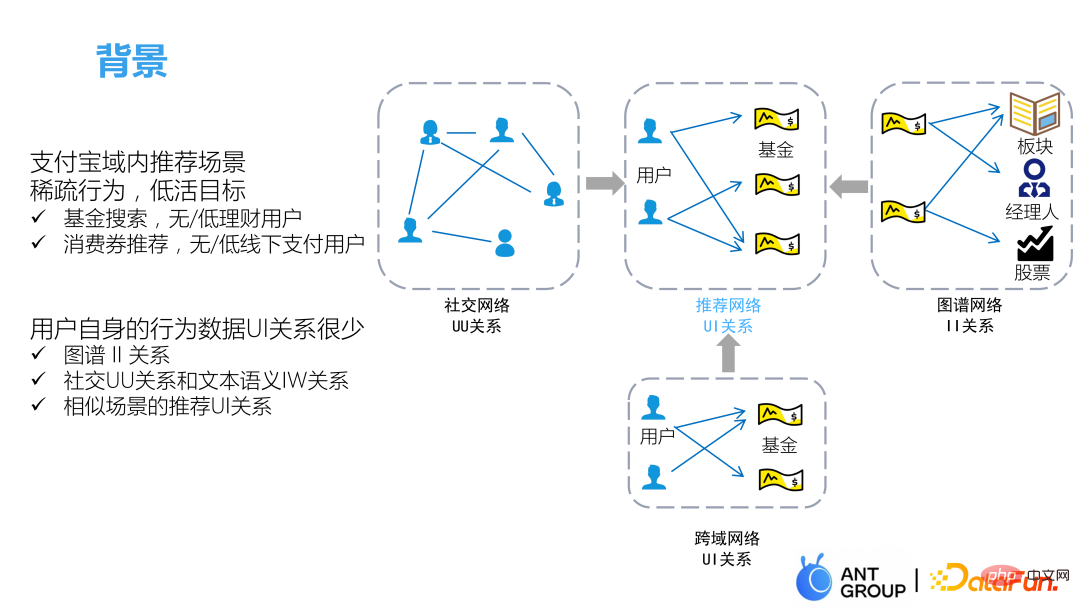
There is very little information about the historical behavior sequence of low-active users. Some methods that recommend directly based on UI historical behavior sequences may not be suitable for our scenario. Therefore, we introduced the following three scene information to enhance the UI relationship information in the Alipay domain:
- Social Network UU relationship
- II graph relationship
- UI relationships in other scenarios
The click preferences of friends of low-active users can be obtained through the UU relationship of social networks. According to Homogeneity can be used to infer the user's click preferences. The graph relationship between items can discover and expand the user's preference information for similar items. Finally, user behavior in cross-domain scenarios also has a great impact on the recommendation task of the current scenario. help.
02Graph-based recommendation
User behavior in many recommendation scenarios is sparse Especially when characterizing new users, there is very little behavioral information available, so it is usually necessary to introduce a lot of auxiliary information, such as attributes, contexts, images, etc. What we introduce here is the knowledge graph.
1. Existing challenges
Knowledge graph is a large and Complete historical expert knowledge is helpful for our algorithm recommendation, but there are still two problems:
##First, The graph itself may not be designed for this business, so it contains a lot of useless information, and the training process is also very time-consuming. A common solution is to keep only the edges in the graph that can be associated with our products and delete all other edges, but this may cause some information loss because other edges are also useful. . The second is that when the graph is used as auxiliary information, there is no way to aggregate user preferences to the edges inside the graph. As shown in the figure above, the reason why user 1 likes movie 1 and movie 2 may be because they have the same starring role, while the reason why user 2 likes movie 2 and movie 3 is that they are of the same genre. If you only use the UI and II relationships of ordinary graph models to model, you can only get the correlation between users and movies, but there is no way to aggregate these potential intentions of users into the graph. #So we will mainly solve the two problems of map distillation and map refining later. ##① Embedding-based model The Embedding-based method first converts the nodes in the graph into an Embedding through the graph representation learning method, and then converts the Embedding Directly connected to the UI model. This type of method learns the correlation in the graph in advance and converts it into an Embedding, so it is difficult to measure the similarity between the user and the knowledge edge, and does not solve the problems of graph distillation and graph refining. ② Path-based model Path-based model The method decomposes the graph into multiple meta-paths based on the knowledge edges in the graph, but the process of constructing meta-paths requires a lot of expert knowledge and does not reflect the user's preference for knowledge edges. ##③ GCN-based model The method based on GCN models the UI and II relationships. Generally, different weights are taken according to different types of edges through the attention method, but the weight of the edge is only related to the representation of the nodes at both ends of the edge, and has nothing to do with the representation of the target node. The model we propose is mainly divided into It consists of 4 parts. First, the graph representation is obtained through graph representation learning, and knowledge dependency propagation is used to learn and aggregate to obtain the importance of different edges. Then, a distillation module is used to sample and denoise the edges in the graph, and then conditional attention is added to do The map is refined, and finally a twin-tower model is made to obtain the result. The specific details of each part are introduced below: ① Graph representation learning layer ##② Graph representation learning layer After learning the representation of the graph edges, aggregate the representations of the graph edges within the neighborhood, and then find the cos of different edge spaces Distance is represented as a weighted aggregation of points in the graph. Because the edges in the graph are very noisy, we will do an additional sampling and sample on the target subgraph based on the weights we learned. The target subgraph is the second-order subgraph of users and products combined. Sampling results in smaller subgraphs. ##③ Graph representation learning layer After obtaining the subgraph, we make a conditional attention to measure the importance of the edge given the user and product. The importance of an edge can be divided into two parts. One is that the edge itself is very important, and the other is that the user pays great attention to this edge. The importance of the edge itself has been learned in the knowledge-dependent attention in the previous step. No additional training is needed. The user's importance to the edge is made by splicing the representations of all target sets and the representations of both endpoints of the edge into an attention Get the conditional attention, and then do some aggregation based on the conditional attention. ##④ Twin TowersModel Finally, make a twin-tower model to measure pairwise loss, and use an Adam-like method to simultaneously optimize the graph representation learning loss and the target loss of the recommendation system. , the complexity of our algorithm is linearly related to the number of points and edges. ##① Experimental data set and benchmark model Select We selected some data sets of recommendation systems and knowledge graphs Regarding the fund recommendation data set of our business, the baseline mainly includes the regularization-based CKE method, the matrix decomposition-based NMF method, the Path-based heterogeneous graph method RippleNet and the GCN-based KGAT. ②Attention visualization In the Knowledge attention on the left, the value on each edge is only related to the nodes at both ends. In the upper right corner, U532 and i The value on 1678 is very small, so it will not be easy to sample this edge later. The two users on the right are U0, but if the products are different, the weight of the entire image will be completely different. In predictionU0- i##2466 and U0-i 780, the weight of the rightmost path of the two graphs is completely different, and U0-i2466 The rightmost path of has a greater weight because in predicting U0- The rightmost path is more important for the correlation of i2466. ##③Model evaluation 03 # #. For example, how to design the cover of a girdle recommendation? Only after fully understanding the user's intentions can the operator design content that meets the user's psychological expectations. 1. Existing Challenges A natural way is to use Topic Model measures the distribution of users to intentions and intentions to products. It treats users as a document and products as a word to decompose user intentions. But in fact, user clicks are sparse, especially when our target customers are low-active users, and product clicks follow a long-tail distribution, making it difficult to capture users' interests and intentions. ##First we combine both the UU relationship and the UI relationship Join GNN to learn and measure the user's click behavior. Then we make an approximation to the learned user-intention prior distribution. The prior distribution of the traditional Topic Model is a Dirichlet distribution. We use a The distribution of Logistic Normal looks very similar to the Dirichlet distribution, and the learning of this distribution can be made differentiable through some heavy parameterization work. After learning the relationship between users, the next step is to learn the relationship between corpus. There is a small program in the picture above, which contains a text description. It uses the skip-gram model to calculate the similarity between the item and the positive and negative samples, obtains the similarity of the word, and maps the similarity of the word to the user intention representation through a DNN. , and finally the KL divergence constraint distribution is adjusted to the form we want. #Our data set is the user’s click data for 7 consecutive days, including There are approximately 500,000 users, 9,206 items and 200 million users' historical click behaviors. The social network includes 7 million edges, and each user has an average of 14-15 neighbor nodes. We conducted offline and online experimental tests respectively. The offline experiment measured the similarity between users under different numbers of topics. similarity between gender and semantics. Online experiments feed back to operations the user intentions predicted by our model, and operations design description texts and display pages based on user intentions to make online recommendations. The experimental link of the overall model may be relatively long, because some materials will be produced in the middle of the operation. The goal of the online A/B experiment is divided into two parts. One part is the operation to design materials based on our model feedback, and the other part is to use the experience of historical experts. output. Experimental results show that our model has been greatly improved in both offline and online experiments compared with before. # #Our recommendation targets are low-active users. They may have no tags, no characteristics, or even have never used Alipay. In the above figure, we first analyzed the similarity between users, where blue represents behavioral similarity with strangers, and red represents behavioral similarity with friends. The results show that friends with closer relationships have a higher degree of behavioral overlap, so we The user's friend behavior information can be used as a supplement to the user's information. Then we analyzed the number of friends of active users and inactive users, and found that the number of friends of active users was much more than that of inactive users, so we wondered if we couldmigrate the click information of active users to their inactive friends Information comes up to assist with recommendations. So our model A core idea is to align the feature spaces of active users and inactive users. Because inactive users are missing many features, so the characteristics of him and active users Space is inherently different. Here we use GNN to learn the user's representation and map the user's representation into a common space. As shown in the figure above, the upper layer of the structure of CD-GNN is an active user we want to predict, and the lower layer is an inactive user we want to predict. They are learned by two GNNs and then mapped to a shared user through a domain invariant layer. In terms of representation, a label prediction is made for both active users and inactive users. Specifically, the graph model includes the Social network and the User-Page network. It performs different aggregation on the two networks, and uses the Domain Invariant Layer to combine active users and Inactive users are mapped to the same space, and the final loss=Source loss Target loss-Domain invariant loss. The online A/B experimental results show that our model has greatly improved CTR compared to GCN, and our model can still achieve good results when the behavior is sparse. The above are some of the recent results published by our team. I am mainly talking about the work in the above three articles. Q1: Parameters of CD-GNN layer Is it shared? A1: It is not shared, because some characteristics of active users, such as ID characteristics, are much more than those of inactive users. The characteristics of both The distribution is not consistent, so we do not share it here. #Q2: In the problem of cross-domain recommendation, the number of Target Labels of inactive users is very small, which causes the model to have difficulty learning the Target Embedding of inactive users. Poor, how should we consider this kind of issue? A2: You can use some pre-trained methods to add some representation information in advance, or supplement the missing features through some methods. You can supplement the features while building the graph model, and supplement the features of neighbors instead of simply aggregating neighbor features. Adding loss similar to feature reconstruction may help solve this problem. Q3: Was the first graph-based method implemented in the fine rehearsal scene? How many levels does the GNN in it generally achieve? A3: Our fund recommendation section exposes only 5 funds to users. Unlike other scenarios where a list is recommended, there may be With hundreds of pieces of information, users can see these five funds at a glance, and the impact of rearrangement is not great. The results of our model are directly connected to the line, which is a refined model. Generally, two-stage GNN is used. The third-stage GNN does not improve much in some tasks, and the online delay is too long. 2. Existing methods
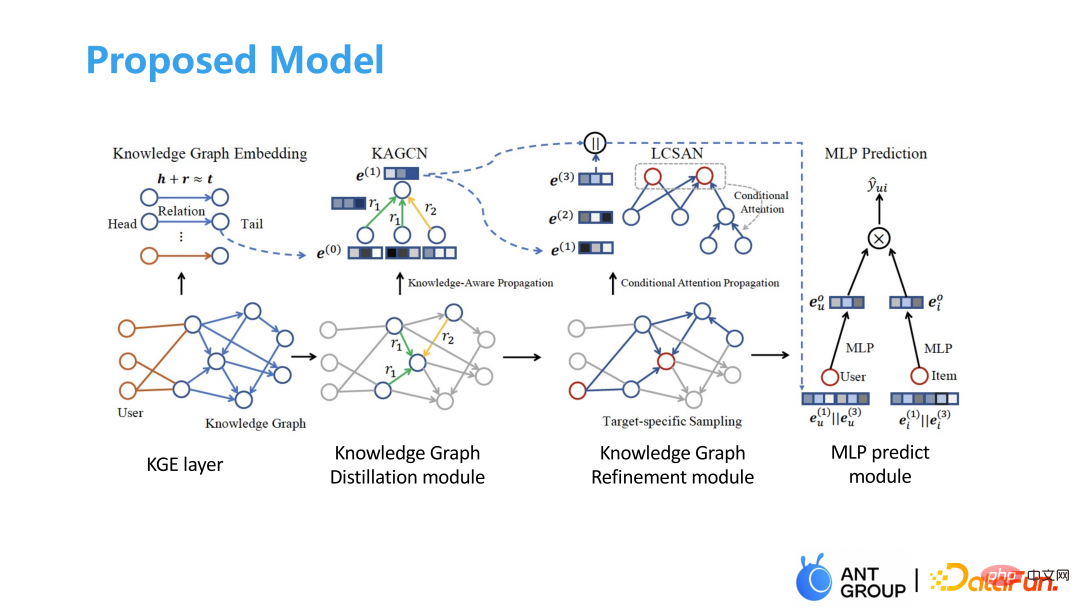
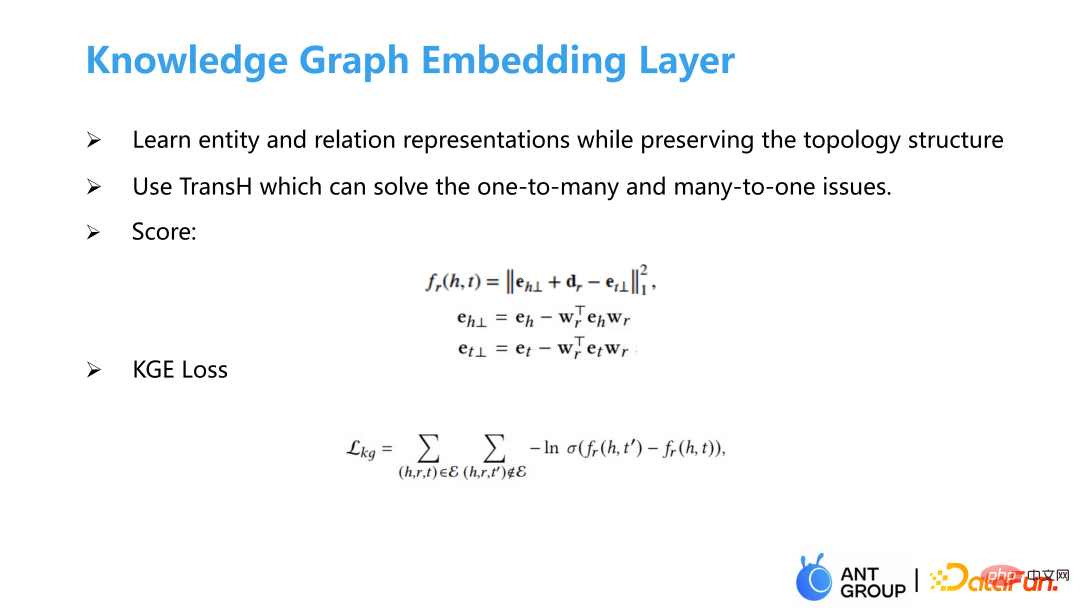
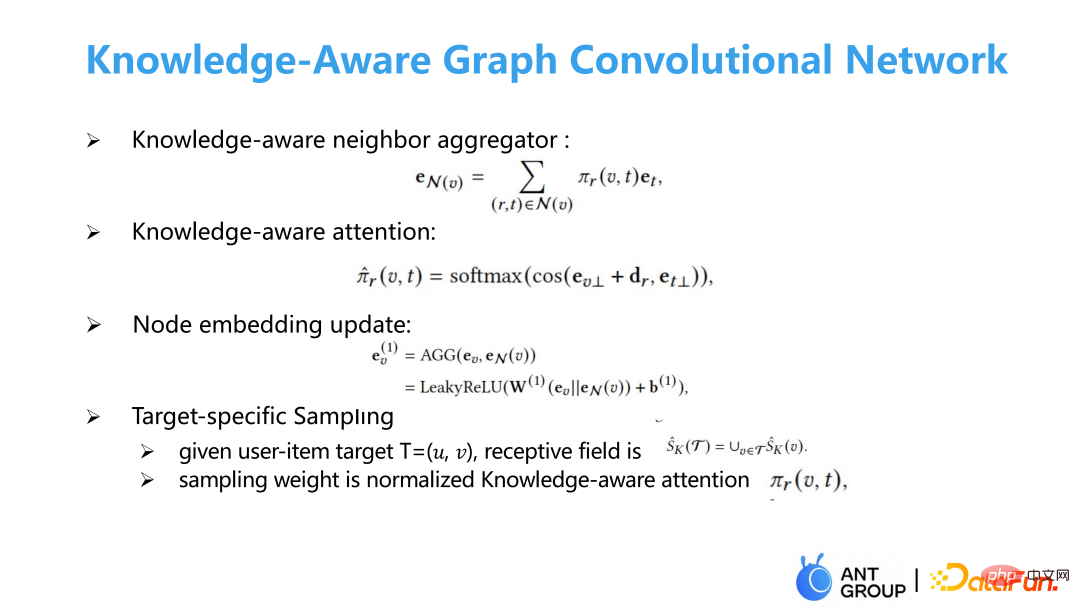

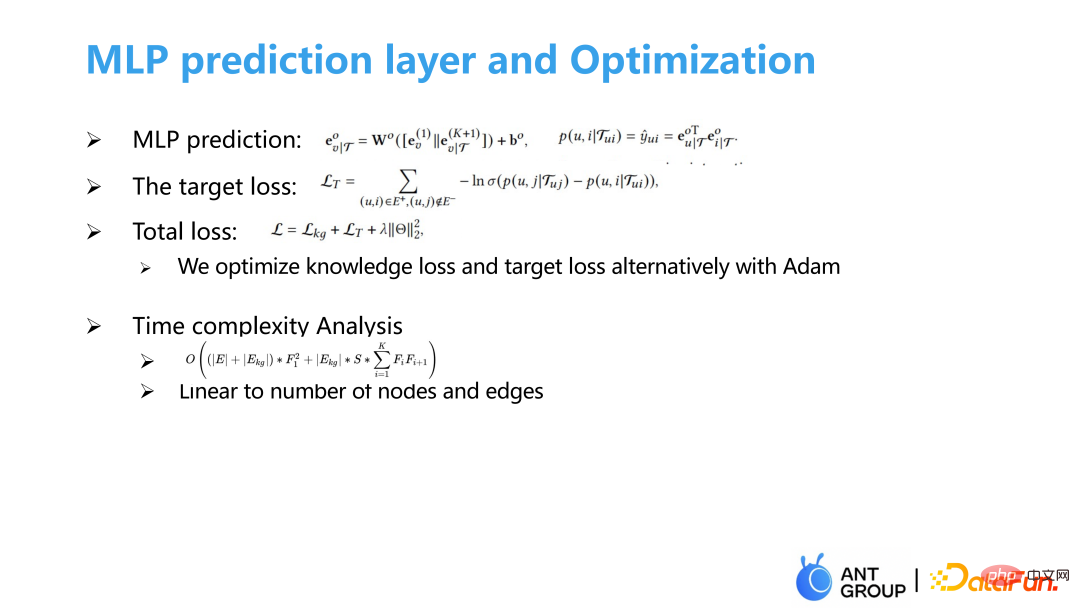
4. Experimental results
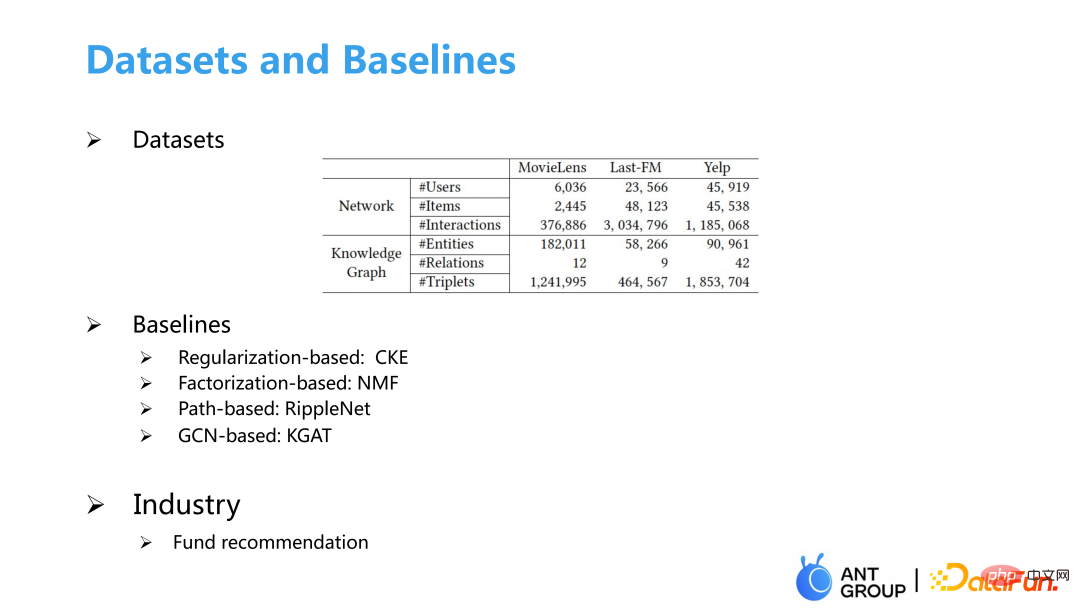
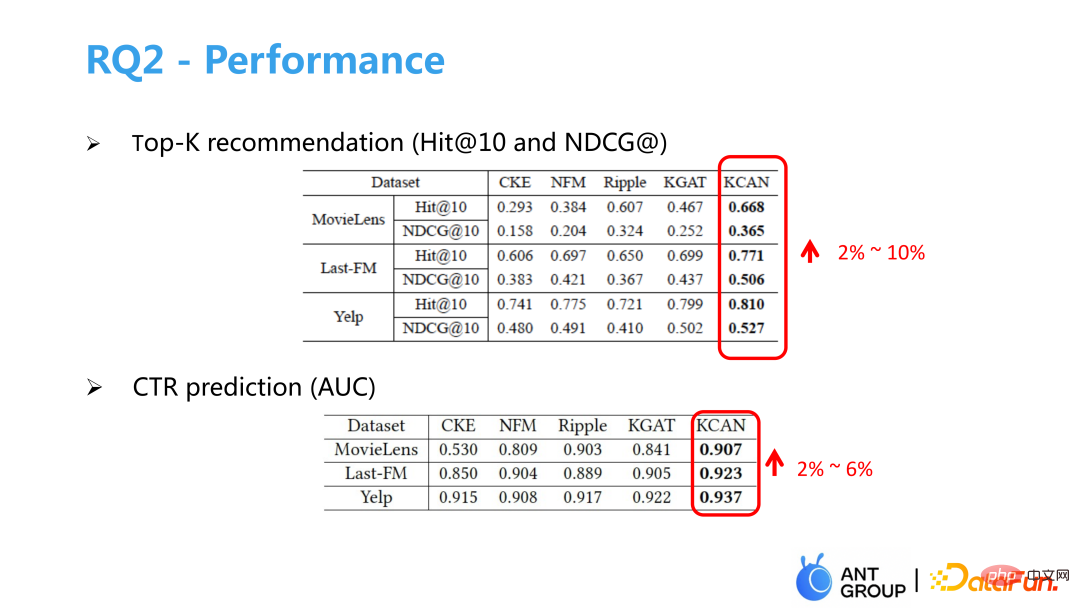 ##We measured the model effect on Top-K recommendation and CTR click tasks. Compared with the baseline model, both are greatly improved. We recommend funds online. /B testing experiments also bring improvements in performance. Finally, we conducted an ablation experiment, and the results showed that the effect of removing the conditional attention or knowledge attention model would decrease, proving the effectiveness of the improvements we made.
##We measured the model effect on Top-K recommendation and CTR click tasks. Compared with the baseline model, both are greatly improved. We recommend funds online. /B testing experiments also bring improvements in performance. Finally, we conducted an ablation experiment, and the results showed that the effect of removing the conditional attention or knowledge attention model would decrease, proving the effectiveness of the improvements we made.
What we have here is based on Social and text recommendation is not a recommendation scenario in the traditional sense. It is mainly to help operators understand user intentions and create some new content and new advertisements for users to guide user growth
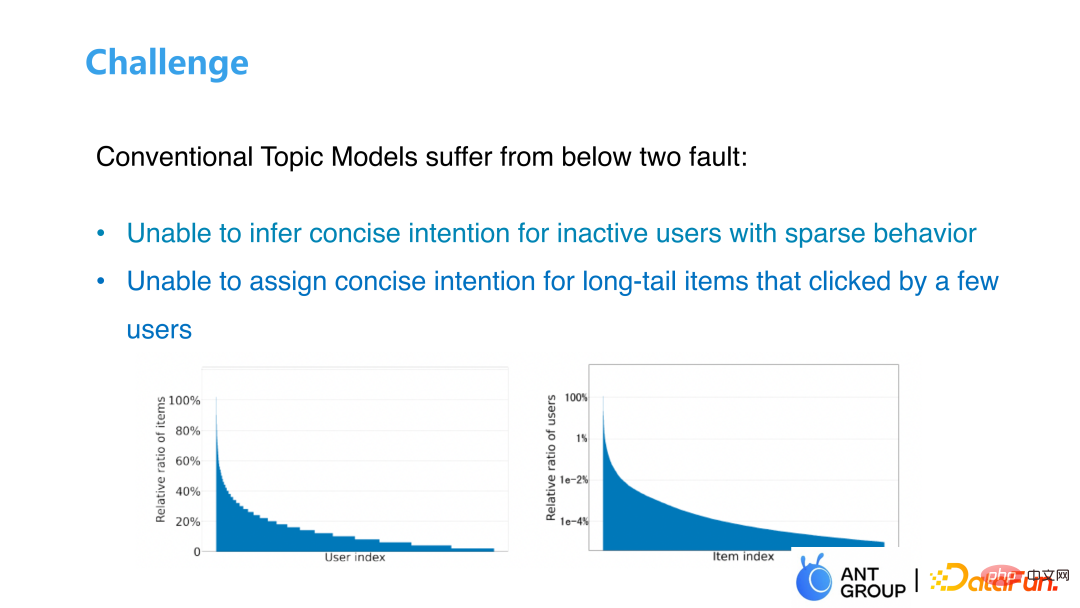
2. Solution
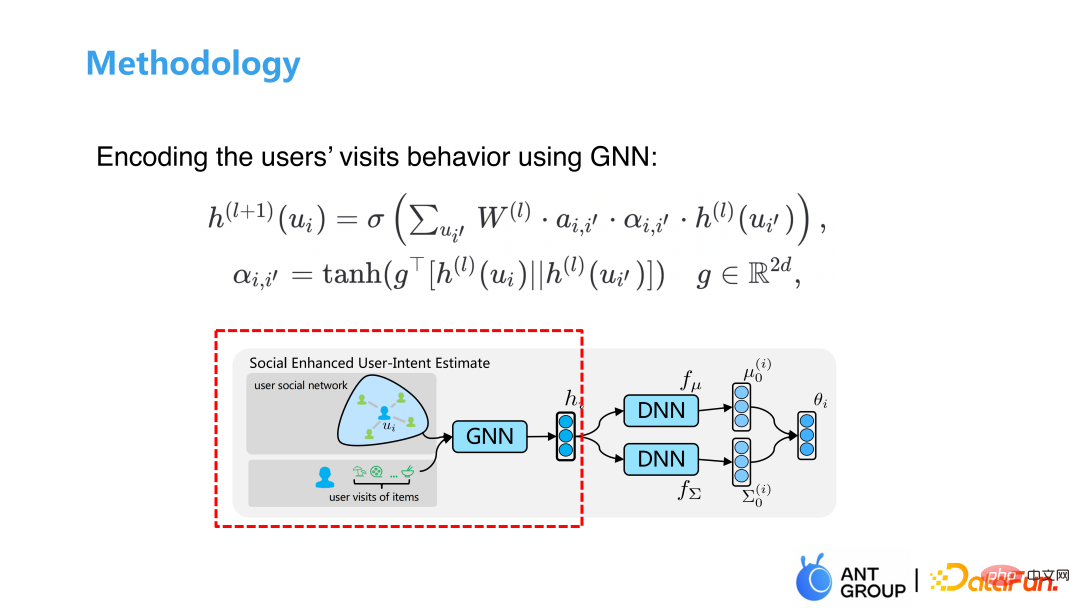
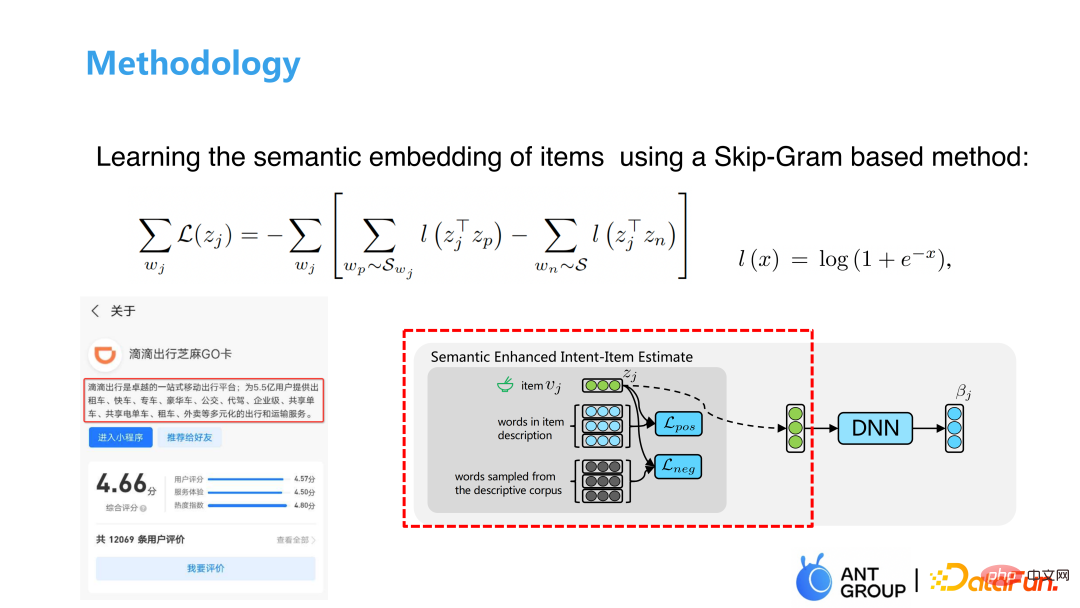
3. Experimental results
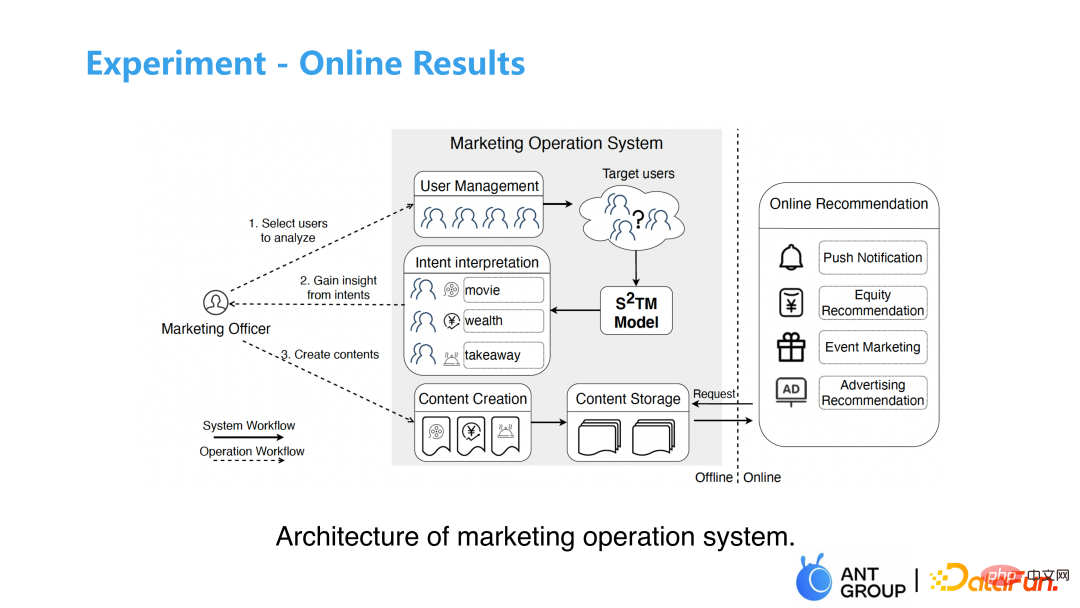
04Cross-domain recommendation
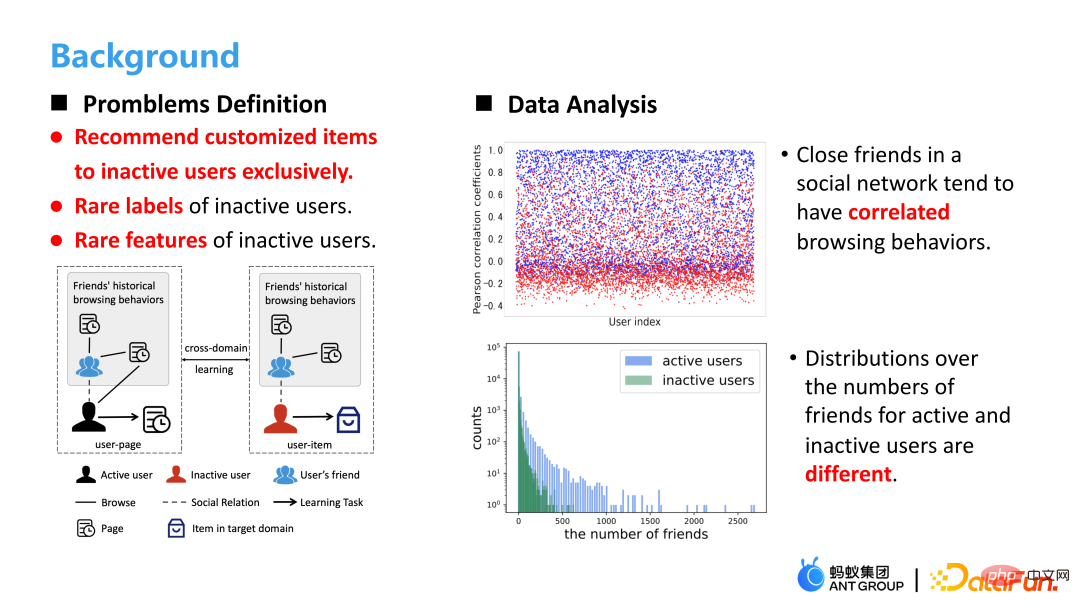

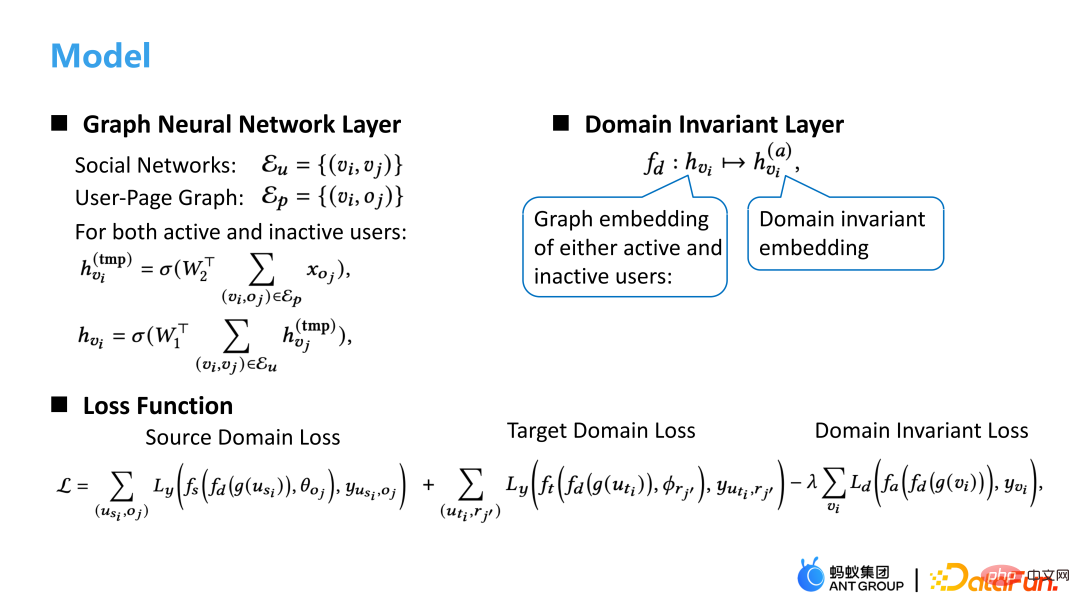
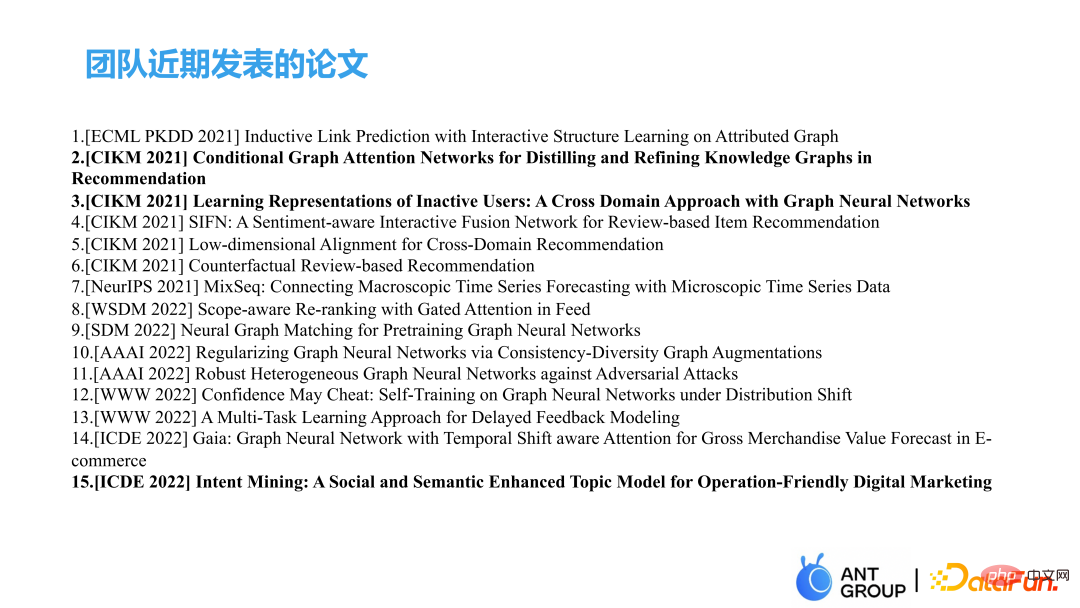
05Interactive Q&A
The above is the detailed content of Application of graph machine learning in Ant Group's recommendation business. For more information, please follow other related articles on the PHP Chinese website!
Related articles
See more- Technology trends to watch in 2023
- How Artificial Intelligence is Bringing New Everyday Work to Data Center Teams
- Can artificial intelligence or automation solve the problem of low energy efficiency in buildings?
- OpenAI co-founder interviewed by Huang Renxun: GPT-4's reasoning capabilities have not yet reached expectations
- Microsoft's Bing surpasses Google in search traffic thanks to OpenAI technology

